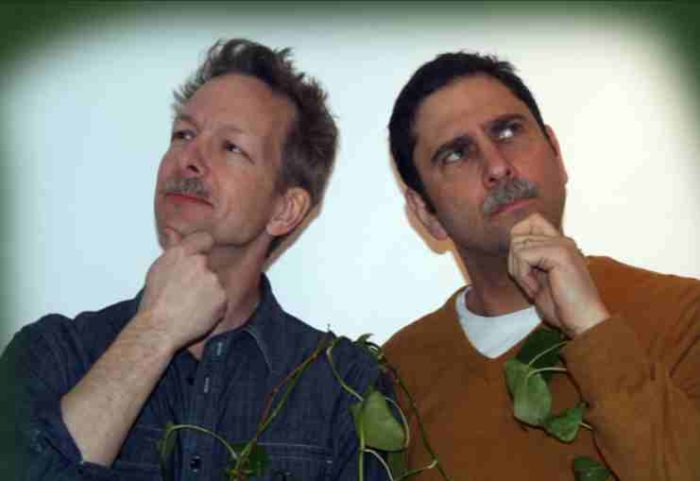
Phil and I have freshened up our drinks and now we’re ready to tackle Items 8 through 15. Be sure to go back to Part 1 to listen to Items 1 through 7.
Here’s a link to the PowerPoint presentation that inspired this podcast: Sprout Follies at NESEA.
The highlights:
8. Pump it! It’s time you learned about ductless minisplit heat pumps and ground-source heat pumps.
9. Keep it clean. Tonic, not toxic. Keep the toxic stuff out of your airtight home. By the way, there’s no need to write in. I misspoke about the British fighting scurvy with tonic water. I meant to say malaria. Quinine (found in tonic water) was a treatment and preventative for malaria. The Brits liked to mix theirs with gin. There. On with architecture.
10. Pushing solar first is shady. Chances are likely that there’s a lot more you should do to improve your project before you add PV.
11. Blower door me. By now, you should all be comfortable with blower-door tests and ACH50 metrics.
12 Touch the sweet spot. Find that sweet spot where spending money on the envelope allows you to save on mechanicals.
13. Sustainability IS design, dummy. No more can a design be judged without using sustainability as a criterion for design.
14. Don’t LEED your clients down a dark path. LEED is just a rating system, people. It is not the be-all and end-all of green design.
15. Watch your language! How we, as professionals, talk about energy efficiency affects how the public perceives and receives energy efficiency.
No episode is complete without a song selection from Phil, and the one he has chosen for this episode is a really good one. It’s “I Retired” by Hamilton Leithauser. Go get this one, folks!
Thanks for tuning in. Cheers!
TRANSCRIPT
Chris: Pump it, Phil.
Phil: Pump it real good. Welcome back, Chris.
Chris: Thank you, Phil. We’ve got fresh drinks. Let’s do Part Two of this thing real fast.
Phil: That’s right. So, we’re up to Number Eight on our list of 15 ‘Top 10’ things not to do.
Chris: Right. Pump it real good, Phil. A.K.A., don’t learn mechanical systems from a fossil… right?
Phil: Yeah. The ‘old school’ guys – they’re coming around, bit by bit.
Chris: Yeah. But really, what we’re saying is: you and I – the houses we’ve been doing – nine out of ten houses, are…
Phil: Air-source heat pumps or ground-source heat pumps.
Chris: Right. The heat pump is ruling; it’s back, man.
Phil: Yeah, it really is. Our loads have come way down, and we can handle it with these things. And these heat pumps are pretty freakin’ efficient. Come on.
Chris: Yeah. And, of course, if you don’t know about ductless minisplit heat pumps or ground-source heat pumps at this point, well then you are a sprout and… Welcome! Welcome aboard. We’re going to make sure…
Phil: Oh, you were just about to dig into them…
Chris: Yeah, but I went the other way… because they’re on Green Building Advisor probably, and they’re just flooding their green little brain full of awesome knowledge, so they’re…
This is not the podcast to learn about ductless minisplits, but it is the podcast to learn that, hey, you need to go learn about ductless minisplits because they are very efficient for the low-demand house (which yours probably is, because you’ve done all these other things).
Phil: That’s right. So it’s a heat pump. You’ve got your air-source heat pump and you have your ground-source heat pump.
Chris: Right. And can we say, “Don’t say ‘geothermal’!” All right? Because you sound like a dink. And I think that’s what we said in the slide.
Phil: Yeah. I mean, it’s technically not wrong, but you kind of think of those guys way below the ground…
Chris: Right. I’m in Iceland. I’m in Yellowstone, tapping into the magma.
Phil: Yeah, that’s not really what we’re doing here. We are just using the natural heat that’s at sub-grade.
Chris: I remember at the conference, you went down to the (I forget who they were – ground-source heat guys) – and they had a big sign over their booth: ‘Geothermal.’ It was really big! And you said, “Don’t you guys really want to just say ‘ground-source heat pumps’?” And they kind of shrugged and said, “Yeah, but everyone calls it ‘geothermal.’ Lighten up. Who cares?”
Phil: They were nice about it. They said, “Yeah. It’s absolutely wrong.”
Chris: Yeah. Geothermal’s wrong, but that’s how everyone knows it. But, if you want to be one of the cool geeky guys like Phil and me…
Phil: Wait. Did you say, “Cool geeky guys?”
Chris: It’s an oxymoron.
Phil: I love that.
Chris: I know. It’s the year of the geek. And we’ll put it on a T-shirt and make six digits. “Stop being an air-hole.”
Phil: So, that was Number Eight. Number Nine, Chris: Keep it clean.
Chris: Right. Or A.K.A., tonic – not toxic.
Phil: I just like that because it took a revelation for me when I realized that tonic was the opposite of toxic.
Chris: I know, and I learned that when we were putting this together and you told me. And that makes sense, because a gin and tonic – we should be having gin and tonics!
Phil: Actually, by the way – by the fifth gin and tonic, it’s a gin and toxic.
Chris: Oh, I see. That makes sense. It used to be, the British would take tonic water to keep scurvy [actually, malaria] away and other things while they were down in Africa. And they would mix their gin with it, and so they’d have a gin and tonic, and that was their drink of choice. And, boy, look at it now!
Phil: Wasn’t it the lemon that kept the scurvy away?
Chris: Probably. But, you know… Brits. Limeys. It was limes.
Phil: All right. So, when we make our tight houses, you can’t do that in a vacuum. You really have to pay attention to all the stuff inside the house.
Chris: That’s right. All these materials that we bring into our environment – that we bring into our house – are…
I think about those FEMA trailers back when Katrina hit. So many people were housed in brand-new FEMA trailers and they were coming down with all kinds of respiratory ailments. And that was because they were just inundated with cheap materials within these little boxes that were being cooked in the sun. These FEMA trailers were just filled with formaldehyde! All the wood products and materials were new and it was just wreaking havoc with their bodies. Poor people – they’d been through so much anyway.
Phil: That’s really interesting.
Chris: Spray foam goes in – and they’re wearing haz-mat suits (Tyvek suits, basically) – and, man, those projects don’t smell healthy. Right?
Phil: No. You see these guys who apply this spray foam, and they’re wearing the astronaut suits, and you think, “That’s going into my healthy house?”
Chris: Right. I don’t think so. Are you doing a lot of spray foam, Phil?
Phil: No. We really try hard to avoid it. We use it to fill in some gaps.
Chris: It’s hard to avoid completely. But anyway…
Number Ten: Oh yeah, we said, “Pushing solar first is shady.” And that is because you want to grab that low-hanging fruit first… right?
Phil: Right. And solar is not that.
Chris: Right. There are so many things to do before you do that. For someone to say, “We’re green; we do solar.” Wow. Yeah, solar is cool, and that’s a great way to provide your electricity – and we’re advocates of solar – but, there’s just so much you can do before that.
Phil: Right. If that’s where you start in your conversation about how sustainable your buildings are, that’s not going to fly. People are going to see through that. And if you hear somebody talking like that, then clearly they don’t know what they’re talking about. They’re using that because it’s a billboard to sustainability.
There’s a building, Chris, on Route 1 in Falmouth on your way to Cumberland. And you can look at it and they’ve spackled it with solar panels on the roof.
Chris: Oh yeah, yeah. Yeah, that’s great.
Phil: I’ve been in that building, and there’s thermal bridging all over that place. It’s got fiberglass in the walls. They’ve got solar panels on the roof!
Chris: That’s “green”!
Phil: Yeah, so…
Chris: You can buy your green, like Al Gore does.
Phil: Right. Carbon offsets.
Chris: Carbon offsets. And that’s honorable and great. But if you’re starting your project saying, “We’re going to be green because we’re going to put solar panels on this. Done and done” – you are not done. You’re a sprout, dude. Get in there; dig in there. There’s so much to do.
In this slide show, we’ve got the pyramid. Remember the pyramid? It’s like the food pyramid.
Phil: That was Martin Holladay’s pyramid, wasn’t it?
Chris: It was… He put it in one of his posts. (I think it was from Minnesota Power.).
Phil: Okay, so this is three-cycled right now.
Chris: Right. This is six degrees from where it really originated. But, check out our slide: things you should start off with first and then move on up the pyramid.
Phil: I will say that the cost of solar panels is coming down, and will continue to – and the incentives will dry up as those costs come down, but right now we’re pretty close (we’re closer than most people think) – for solar being cost-effective.
Chris: Oh yeah. In fact, if you’re not financing your house, you should be buying solar.
Phil: Right. If you’ve got the cash, then you’re paying 8 cents per kilowatt-hour – which is pretty hot. I mean, most places in the country – that’s good. We pay, what, 15 cents per kilowatt-hour here?
Chris: Yeah, between 13 and 15.
Phil: Connecticut is 20?
Chris: Yeah. Hawaii is off the charts. It’s a million dollars!
Phil: And Canada is, like, 5.
Chris: Yeah. How do they do that?
Phil: I don’t know.
Chris: I don’t know either.
Phil: Okay.
Chris: Okay. Let’s move on… eh? Number Eleven: you get to say it.
Phil: Chris, go blower-door yourself.
Chris: Yeah, blower-door me, Phil. We’re talking about blower doors. If you don’t know what ACH50 is, man, I feel bad for you. I do!
Phil: [He laughs] Again, you’re talking to the newbies, Chris. Be nice.
Chris: Well, you’re right.
Phil: In their defense, there are a number of metrics out there to measure airtightness. There is “effective leakage area”…
Chris: Right. And what we’re talking about, of course, is hooking up a blower door to your project at the end – or even better, midway through the project, when you can actually access (and shell-test) your project. Windows are in; sheathing is in. Insulation is not; sheetrock is not. If you can blower-door test at that point, that is a great time, because you can find leaks and you can plug them and you can move on. It’s great.
Phil: And if you’re an architect, put that in your specs. Write it down somewhere: “This building needs to be blower-door tested three times in the process.”
Chris: Nice! And you get that phone call from the builder: “Whoa, whoa, whoa. Hey, I just read this spec. We’re supposed to blower-door this thing? Are you blower-door-ing this or am I?”
Chris: “Well, someone is. I know some people, if you can’t do that.”
Of course, if you are going after some rating system – if you are doing either LEED or Passivhaus – it has to be a third party. Or Energy Star. The point here, folks, is: there is a very easy way to test your building to see how much it leaks air, and it’s called a blower-door test. Learn about it. Use it.
Phil: if you don’t do it, you’re an air-hole.
Chris: You’re an air-hole. You’re being an air-hole. Stop doing that!
Phil: Number Twelve, Chris.
Chris: Yes.
Phil: Touch the sweet spot.
Chris: Touch it, Phil.
Phil: That’s it, baby. You know when you touch it.
Chris: That’s right. And we talked about this earlier in Part One, but, we’re looking for that sweet spot. If you’re energy-modeling, it’s easier to find the sweet spot.
Phil: I wouldn’t say easy.
Chris: No, easy is not the right word. It’s hard.
Phil: It is hard. But, the energy model will certainly help. Having a builder on-board is vital – or having someone who knows what things cost, because that’s what you’re looking for here – you’re looking for the optimization point between costs and energy efficiency.
Chris: Right. We’re making the envelope really robust; we’re introducing solar gain; we’re able to reduce energy demand to the point where we can shrink mechanical systems. And then, at that point, you should see some savings by shrinking the mechanical systems that will offset the cost of making the house better in performance – that would be the sweet spot. You hit that and you’re a hero. Otherwise, you’ve failed and everyone’s angry.
Phil: For newbies, we’ve posted this on past episodes. We’ll throw it on again – the spreadsheet that we’ve developed in-house that allows people to compare multiple scenarios to find that sweet spot.
Chris: That’s right. All the cool kids are doing it, so get in there.
Number Thirteen: Sustainability is design, dummy. (We said that in the slide because I feel that way.) I mean, we picked on Tom Kundig directly in our presentation.
Phil: He’s got this beautiful building made out of Cor-Ten steel.
Chris: He has more than one. To say he’s not good is terrible; he’s great. But I have this love/hate – I see his work and “I love that; I love that; I hate that; I love that” – because of those thermal bridges. It’s this big, steel “W” or wide flange that just goes on to support something and it’s just bridging right through.
Phil: And you know it’s just raining on the inside of the house in the wintertime.
Chris: Oh yeah. Energy-inefficient. And I think in our slides we gave him an “F+”.
Phil: Yeah. It’s really pretty, but your building is failing.
Chris: It’s failing; big ol’ “FAIL!” But it gets the “+” because it looks pretty and we like it from a design standpoint. But, “F+.”
So what we’re saying is: no longer can architecture ignore energy efficiency and sustainability as a metric for good design. It’s one and the same.
Phil: That’s right. That’s not a separate thing now.
Chris: Right. And for you to do your beautiful glass box with steel pins that go out and make this cool form…
Phil: You may as well have a building that’s falling down.
Chris: You might as well, because in ten years you’re going to look like an idiot. Idiot!
Phil: That’s right, especially given our climate in this decade.
Chris: Right. Philip Johnson – he can be forgiven. (It was the sixties – gas was cheap; everyone didn’t care; beautiful house.) Love him; love that.
Phil: That’s right. People who design glass houses…
Chris: Shouldn’t… something clever!
Phil: Something clever! [Much laughter.]
Chris: Damn! Damn these drinks! We could be so much better! If only we had some good radio hosts in here.
Phil: Let’s move on. (That way we don’t have to think about it.) Chris, what’s Number Fourteen?
Chris: Don’t LEED your clients down a dark alley. And, by that, we’re not picking on LEED.
Phil: We are, a little bit.
Chris: Yeah, okay. We are. I was on the board that founded the Maine chapter of the U.S. Green Building Council here. I loved LEED and was part of it when it was a pilot project, but very quickly you see that people become point-chasers. And that’s when LEED takes a turn for the worse.
Phil: Right. Respect LEED and use it as you need it, but don’t make it the end-all. Make a great building first.
Chris: Make a great building. If you want that certificate, if you want that plaque, if you want validity from a third party – I imagine if you were, for example, a developer and this is a house that you’re going to put on the market and you’re saying, “It’s green,” it helps to have a respectable third party say, “Yes, it is green. You’re LEED Silver. You’re LEED Gold. You’re LEED Platinum.” That means something, yes.
Phil: Or, if you’ve got a builder who hasn’t really done this before and you want to keep him in check. And he’s got to watch his waste, for instance, and he’s just not doing the right things. And he’s got to make an airtight building.
Chris: Right. This is a great tool, a great structure, in which he has to provide certain documentation that proves he does these things. So it’s a good tool. But, to put LEED on a pedestal and say, “LEED equals green” is not right. A LEED house is a green house, but LEED is not the end-all, be-all of it.
Phil: There are two great builders in this state…
Chris: Only two?
Phil: It was Peter Taggart and Wright-Ryan Construction. I don’t know if that’s still the case, but when I talked to them, I think it was maybe a year and a half ago, they had still each only done one LEED building.
Chris: Is that right?
Phil: And I was shocked! They may have done more since then, but one LEED home.
Chris: Interesting. One LEED home. Yeah.
Phil: And I thought about it, and at first I said, “Really? You guys are really good; you know how to do this.” And the point was: they’re really good. And they know how to do this. And it’s not vital that they chase the points anymore.
Chris: Interesting. I’ve got a few LEED plaques on the wall in the conference room, and I’ve got a few in the drawer.
Phil: We’ve got a stack of them. We’ve got a stack of (literally!) eight of them. We talked about it the other day: “Are we going to put these back up? What do we do with these?”
Chris: All right, moving on. We’re not bashing LEED. But, we’re kind of bashing LEED. It’s just a rating system. It’s a rating system, is what it is, and you pay for it – and that’s the thing.
All right. I’m sorry. Fifteen?
Phil: Watch your language, Chris.
Chris: I will, you son-of-a…
Phil: Hey, hey, hey, hey! [Much laughter,]
Chris: And, of course, by this we mean: we’re out there as green architects; we’re the torch-bearers for this – and when I say “we,” I mean you guys, too (whoever is listening to this) – if we’re out there talking like a green pamphlet, this is all meaningless and it becomes like a green pamphlet. There’s some real, tangible things that connect to the everyday homeowner. It’s not just about being green. In fact, stop using that word.
Phil: And the other things that happen, Chris, I would say, that yes, you and I want to save the world.
Chris: I do! I do want to save the world.
Phil: Genuinely, we do. But it may not catch on with that language. We’re trying to get this across to the general public. And if we’re going to make an impact – climate change is coming freakin’ fast (we may already be too late) – we have to change the words that we use when we talk to other people, because it doesn’t really matter to most people that we’re going to “use your money to save the world.” We want to talk about durability and quality and comfort, and that it’s a good investment.
Chris: Investment. I use that word quite a bit with my clients, because it takes away the stigma of… When you say something is “green,” immediately… If they’re a liberal hippie, great. (That word is friendly and nice and you want to snuggle with it.) But if you’re not (if you haven’t already drinken the Kool-aid)…
Drinken??! Did I just say that?
Phil: Dranked is the proper…
Chris: Dranked! I just dranked me some of the Kool-aid. [Much laughter.]
I don’t even know what we’re talking about anymore.
Phil: The word “investment” is… if you’re talking to a conservative guy, that’s how you’re going to get through. It’s all about the numbers; it’s all about the money.
Chris: I’m not going to say, “You want these windows because of the solar heat gain coefficient and they’re going to save on fossil fuel and that’s going to help save the environment and reduce your carbon footprint.”
I’m going to say, “You want these windows because they are very high quality. You can stand next to them when it’s zero degrees outside and not feel like you’re standing next to a cold window that you need a sweater for the draft and the heat-suck that comes off of you. You’re in an awesome house.”
Phil: Right. Do you want a high quality building? If not, that’s fine.
Chris: Right. We can do that single-pane glass thing that you mentioned.
Phil: Or would you like to give money to save the spotted owl? It’s not going to fly.
Chris: [He laughs.] I love the spotted owl. It’s our mascot around here at Briburn.
Phil: So, watch your language. Change your language.
Chris: Right. Do you want to recap them all? Let’s just do it. In fact, maybe we can do drum roll sounds. I don’t know – if Sheila’s up for it – but let’s just do it. Don’t do it on the table.
Phil: Number fifteen –
Chris: Watch your language.
Phil: Number fourteen –
Chris: That’s you.
Phil: Don’t LEED your clients down a dark alley.
Chris: Number thirteen – Sustainability is design, dummy.
Phil: Number twelve – Touch the sweet spot.
Chris: Number eleven – Blower-door me, Phil.
Phil: Number ten – Pushing solar first is shady.
Chris: Number nine – Keep it clean.
Phil: Number eight – Pump it; pump it real good.
Chris: Number seven – Bigger isn’t better.
Phil: You should know. Number six – Do your modeling before the runway.
Chris: Number five – Don’t wait to integrate.
Phil: Group hug! Number four – Belt, suspenders, and clean underwear.
Chris: And also redundancy.
Phil: And redundancy.
Chris: Number three – Don’t cross that bridge when you come to it.
Phil: Number two – Raise your glass, Chris.
Chris: Thanks. Number one (and the number one thing) – Don’t be an air-hole.
All right.
Phil: All right. Should we go out with a nice song?
[The episode closes with a song by Hamilton Leithauser: “I retired.”]
Weekly Newsletter
Get building science and energy efficiency advice, plus special offers, in your inbox.





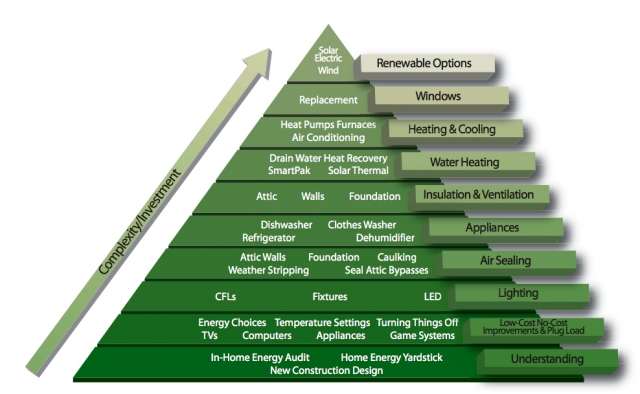

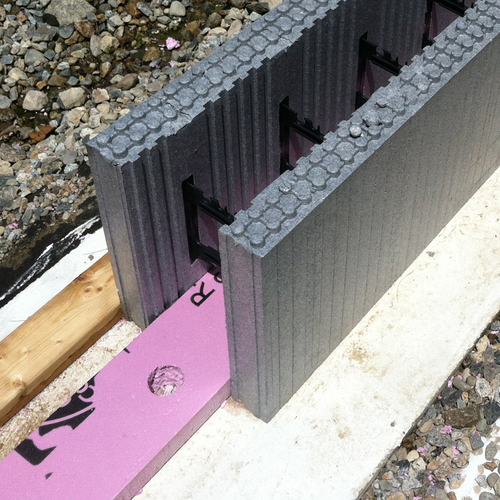
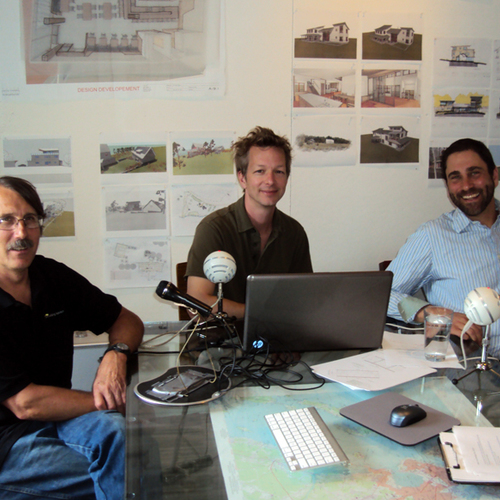
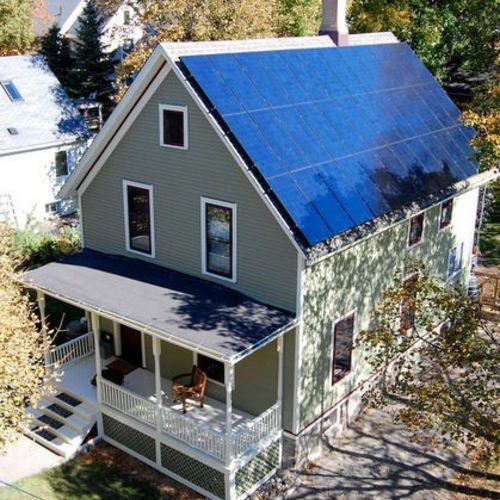






7 Comments
what's that thing in the ground
Thanks for emphasizing the difference between "ground source" and
"geothermal". The misuse irks me too. I pulled that one on some
vendor at the local "home show" just a couple of weeks ago, who
actually does know the difference but sort of shrugs it off because
all his show-booth materials are already printed the way they are.
I related my tale from the Earthlinked people, discovering down
in Florida that to have a full season's worth of cooling capacity
against an average deep-soil temp in the mid seventies they had
to install double or better sized borehole fields over what they
thought they'd need. Air, for its relatively low instantaneous
capacity, is at least constantly renewed...
_H*
iTunes
Hey - you punks still podcasting this or is it only here on GBA? Not downloading.
Response to Dan Kolbert
Dan,
Unfortunately, the automatic uplink that connects our podcasts with the iTunes web site is not working. Our tech team is trying to fix the bug right now. Please be patient; we hope the problem is fixed soon.
iTunes
...what Martin said. Sorry, Dan.
Tonic
I would have thought a couple of closet alcoholics would have known this one. It's tonic because it's quinine water, which prevented malaria. Very important to those British colonial overlords.
Malaria
Yes, Dan. While recording, the entire disease of Malaria left my brain as did the ingredient Quinine. Let me make a correction in the blog, oh wait I did. (Check out number 9 at the beginning of this blog post.) Unfortunately it doesn't help us with the "listeners" who miss the written blog. No worries. I'm not worried about contracting either scurvy or Malaria, these days anyway.
Now I see
Sorry for the snark. And malaria will no doubt be making a comeback any day now, so start drinking now. Just to be safe.
Log in or create an account to post a comment.
Sign up Log in